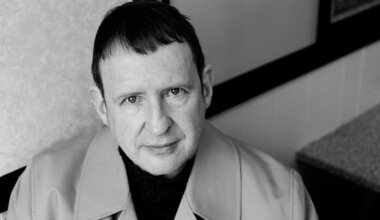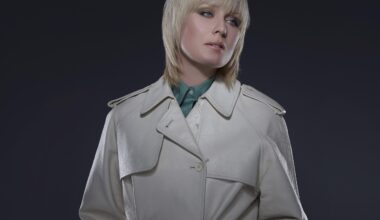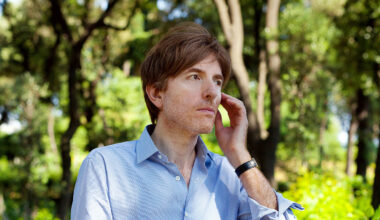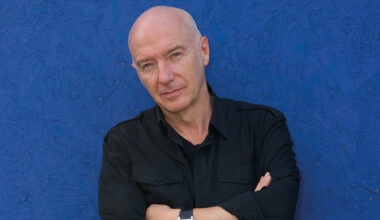With the release of ’N.O.W. Is The Time’, an album featuring the finest moments of Nightmares On Wax’s 25-year career, Now big chief George Evelyn talks us through some of the people, places and sounds that have inspired him and his tuneage
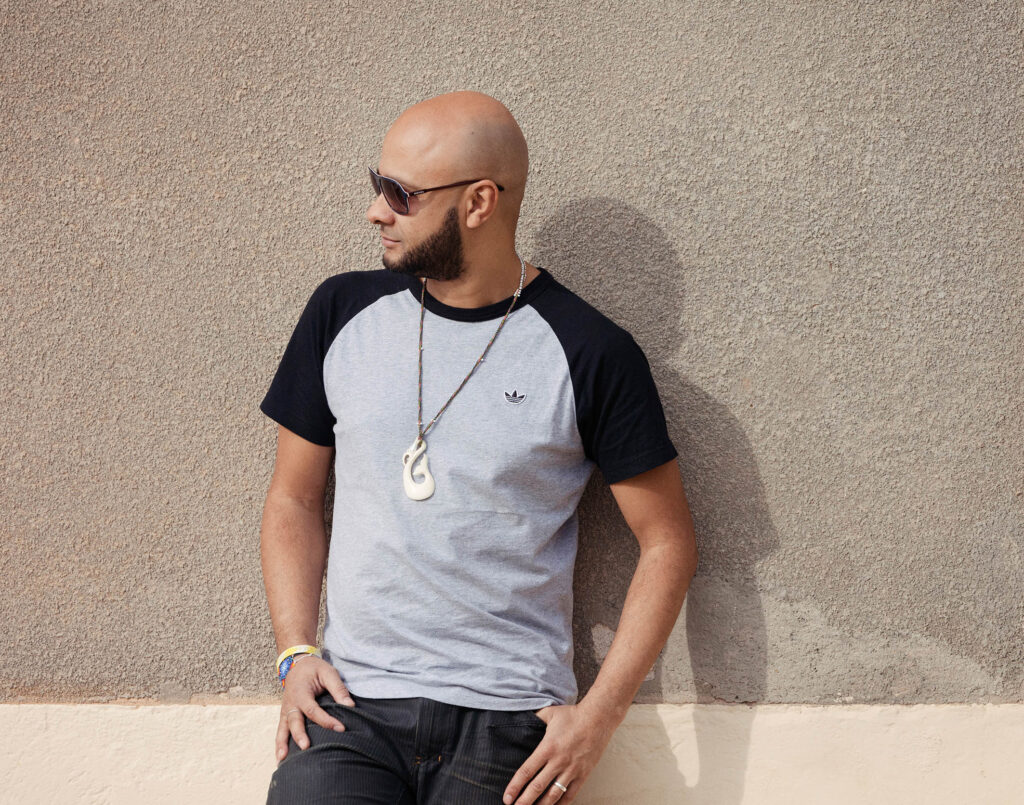
Sound Systems
It all started around 1977, when I was about seven years old, hearing the reggae sound systems in my neighbourhood. There were two rival sound systems, Concrete Lion and Messiah. The Messiah sound system was from Hyde Park in Leeds, which was where I grew up.
The main guy behind Messiah was called Clifford Smith, who was the older brother of my best friend at school, Dennis. Dennis and I would hang out with them, watching them build the speaker boxes, setting up the sound for the weekend, or getting ready to play at the Belle View Youth Centre, our local youth club. Sometimes a sound system would visit from another area to compete against them. We were too young to go into the dances, but we used to hang around outside, listening to them throwing down on the microphone and dropping reggae tunes.
Scientist and the Top 40
Standing outside the youth club listening to what was going on inside created a lot of curiosity in me. I could hear them practising and testing out the sound systems, but it wasn’t the same. You’d only get to experience the full effect when they were at Carnival, once a year on the August bank holiday, when all the sound systems would be up on the streets. That would be the closest I would get to enjoy the sound systems properly.
Because of all that curiosity, I came to really like the music that was being played. My first memory of becoming a fan of a particular artist was Scientist, who released these amazing dub albums on Greensleeves Records. His album sleeves featured some amazing cartoon artwork. My mates and I would sit there and listen to these albums and talk about which character we wanted to be on the record sleeve, fantasising about being that certain person on the cover.
Because I was really intrigued by it all, that led towards DJing and collecting records. I remember applying to get a DJ job at a hospital radio station because I wanted to be a radio DJ too. I think the radio DJs were much bigger celebrities back then, in the late 1970s and early 1980s. Listening to the Top 40 on a Sunday was a regular thing in our house. We would listen to – dare I say it – Jimmy Saville doing the chart rundown while we were having Sunday dinner.
Hip Hop and B-Boy Culture
We spent a lot of time on the streets when we were kids, particularly when the breakdancing thing came along. That scene totally shook my world. There was suddenly all this amazing new music, all these brilliant hip hop and electro records, and it was like a whole new world just opened up to me. It was a mad trip right the way through from 1982 until around about 1985 or 1986.
That period really laid the foundations for me wanting to make music of my own, especially getting into scratching and discovering how to manipulate records. We only had one turntable, so I had to learn how to use a cassette machine to tape segments of different records and then put them together to create megamixes. I’d invite people round to my house to take me on at scratching on a crappy Fidelity turntable. It was all about bravado, about battling with people and having a reputation through breakdancing or DJing or rapping. It was all great fun.
James Brown and Breakbeats
This is where my influences really started to grow. Coming out of the reggae sound system scene and then going into the street culture of hip hop, I was experimenting with sounds and that led me to start collecting what were called “cuts” back then. I got into finding out what certain scratch sounds were on records, which then led me to James Brown and to finding out what breakbeats were. Collecting breaks took me in a whole new world of music and it was a real voyage of discovery with people like Earth, Wind & Fire, Curtis Mayfield and Ike Turner. I was unearthing all this incredible music through these familiar cuts I’d heard on hip hop records.
I will always be grateful to hip hop for giving me that broad horizon. If it wasn’t for hip hop, I wouldn’t have the record collection I have now, although it’s not just all hip hop records. My collection covers a very wide spectrum of music of different styles and from different decades.
Chicago
Disco and funk records became a big part of my collection and from there I got connected into the early house scene. I’d be buying Chicago house tracks, but without really even knowing that’s what they were. I was just buying them because they were great tracks. I got into Trax Records and was buying stuff by Marshall Jefferson, Adonis, Steve “Silk” Hurley, Darryl Pandy and other Chicago house artists. That was just incredible.
House music swept the dancefloor for us. I remember in 1985, we would go to clubs or to all-dayers as dance crews, and we’d make circles at these events and be getting down to what are now considered classic house tracks. There were no raves back then. The music was just the music. We didn’t know anything about the amazing clubs like The Warehouse in Chicago, which is where this music was derived from.
Downbeat
Me and Boy Wonder [Kevin Harper, half of Nightmares On Wax for the first album only] started running our own club night in Leeds called Downbeat in 1986. We did it for three years, through until 1989. Being in that environment, playing tunes, collecting hip hop records, getting the rare tracks that nobody else had, getting into the whole rare groove thing, that’s what me and Kevin were about.
And in the middle of all that, we had this desire to make a record. Kevin was great at beatboxing and I rapped and scratched a bit, so we had that b-boy element. Once we got some equipment, we started making tunes together and the obvious thing was to drop them at our club night. So that’s what we did.
We were taking demos down there and playing them off a cassette. Playing cassettes in a nightclub – imagine doing that now!
We released our first EP in 1989 on Poverty Records. It was called ‘Let It Roll’. It led to us meeting Steve Beckett and then getting a deal with Warp Records. Nightmares On Wax were Warp’s second ever signing.
Aswad and Hyde Park
Throughout this journey, I’ve always had music in my life, even back when I was seven. My influences really do come from the bare necessities, from being attracted to the music that was around me in my neighbourhood, the music of my environment.
Something I remember very clearly was being 13 years old and getting my first Walkman. The first album I listened to on it was Aswad’s ‘New Chapter’.
It was actually my brother who had ‘New Chapter’ and I had ‘A New Chapter of Dub’. I remember walking around Hyde Park for hours and hours on my own just listening to this one album, enjoying the experience of having headphones on and walking round the streets listening to this great music with Aswad’s great production. Walking round my streetlamp-lit neighbourhood listening to that album is such a strong memory for me.

